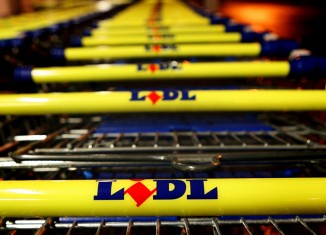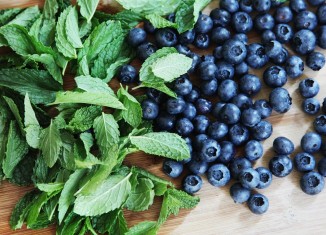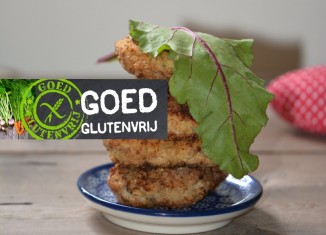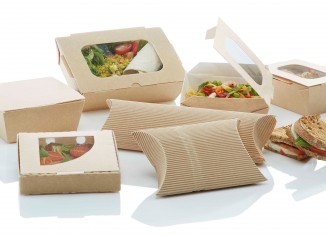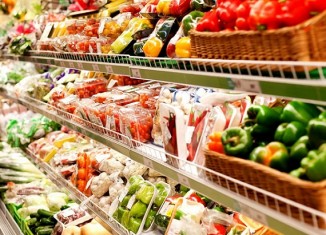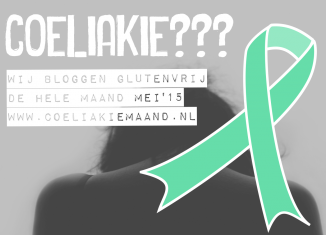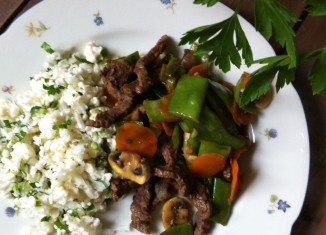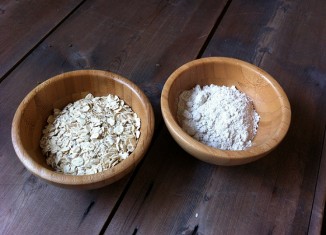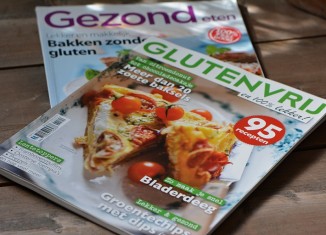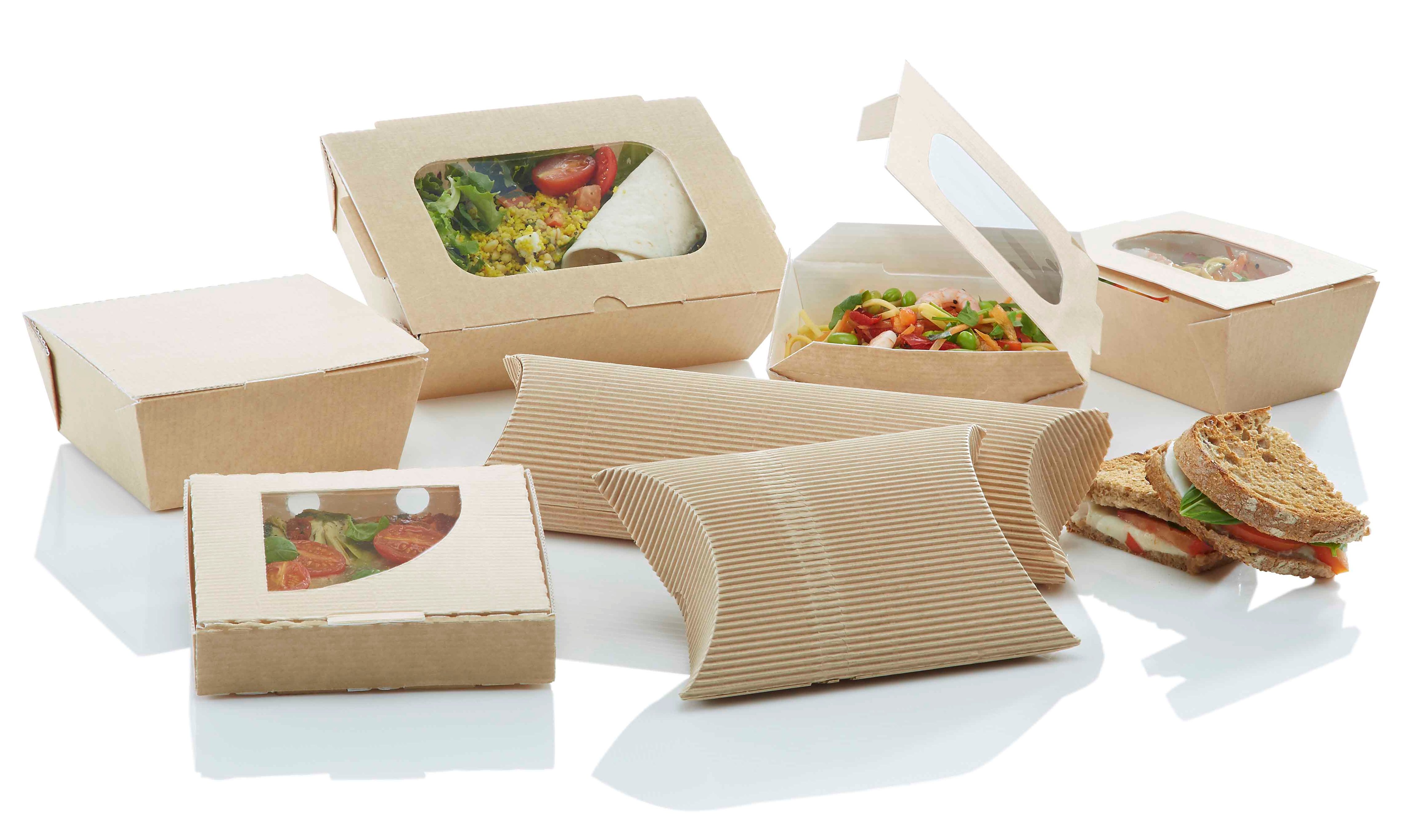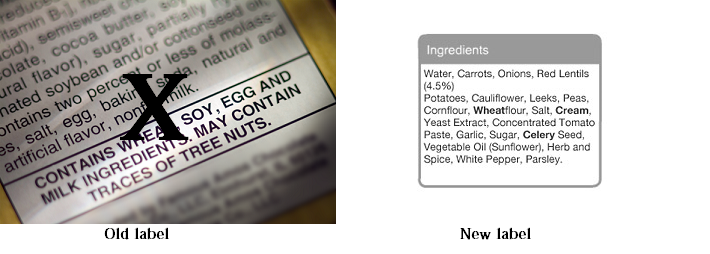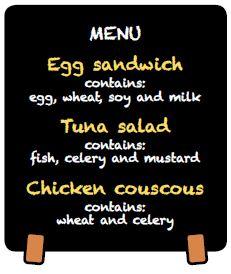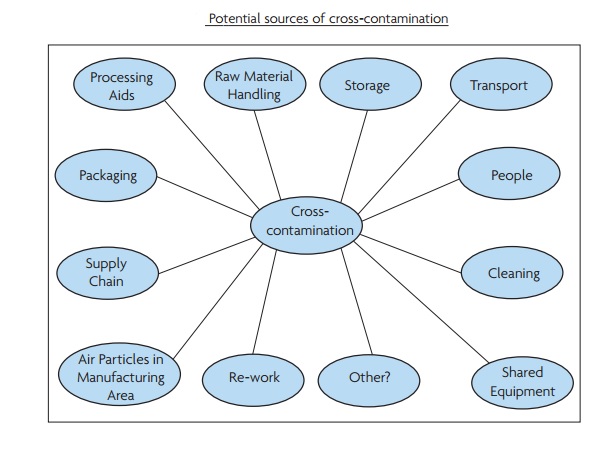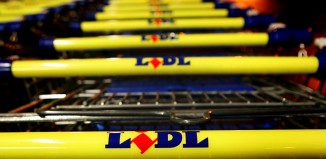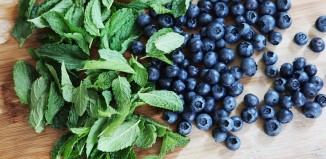Better times are coming? Slowly but yes. This year (2014) on December 13th a new law was established. It is called The EU Food Information for Consumers (Regulation 1169/2011). It is a new European law reorganizing rules on food labeling. There are some good changes introduced with this new law, like:
- All food purchased outdoors pre-packed and not pre-packed (if it is a supermarket, restaurant, market stand, bakery, cafe or canteen) is required to have included allergens information,
- No more random, misleading ‘gluten free’ terms on food packages will be allowed (only with a GF certificate)
- And hopefully better awareness in horeca with regard to food allergens as it is not acceptable anymore that we receive no answer to our question ‘Is your product/food gluten free?‘
- Other changes
- *Specific for fish
The 14 allergens (and products thereof) that must be labelled or indicated as being present in foods are:
- Cereals containing gluten such as wheat, rye, barley, oats, spelt or khorasan
Except:
(a) wheat-based glucose syrups including dextrose
(b) wheat-based maltodextrins
(c) glucose syrups based on barley
(d) cereals used for making distillates or ethyl alcohol of agricultural origin for spirit drinks and other alcoholic beverages
- Crustaceans for example prawns, crabs, lobster, crayfish
- Eggs
- Fish
Except:
(a) fish gelatine used as a carrier for vitamin or carotenoid preparations
(b) fish gelatine or isinglass used as a fining agent in beer and wine
- Peanuts
- Soybeans
Except:
(a) fully refined soybean oil and fat
(b) natural mixed tocopherols (E306), natural D-alpha tocopherol, natural D-alpha tocopherol acetate, natural D-alpha tocopherol succinate from soybean sources
(c) vegetable oils derived from phytosterols and phytosterol esters from soybean sources
(d) plant stanol ester produced from vegetable oil sterols from soybean sources
- Milk (including lactose)
Except:
(a) whey used for making distillates or ethyl alcohol of agricultural origin for spirit drinks and other alcoholic beverages
(b) lactitol
- Nuts such as almonds, hazelnuts, walnuts, cashews, pecan nuts, Brazil nuts, pistachio nuts, macadamia (or Queensland) nuts
Except:
nuts used for making distillates or ethyl alcohol of agricultural origin for spirit drinks and other alcoholic beverages
- Celery (including celeriac)
- Mustard
- Sesame seeds
- Sulphur dioxide (>10mg/kg or 10mg/L) expressed as SO2 -a preservative found in some dried fruit, wine, sweet breads with dry fruits and meat products
- Lupin
- Mollusc for example clams, mussels, whelks, oysters, snails and squid
The layout of food labels will change. On the pre-packed products the allergens have to be emphasized using a typeset that clearly distinguishes it from the rest of the ingredients, like different font, bold, style or background color. It i snot allowed anymore to include additional box with the list of allergens. This is supposed to simplify the labels.
The business selling the not pre-packed food (for example restaurants, deli counters, bakeries and sandwich bars) is required to have a detailed knowledge on presence of food allergens in the food that they distribute. This information can be communicated:
- on external informational boards
- on menu card
- spoken information
It is not acceptable anymore that the horeca personnel cannot provide allergy information that one requires. They need to know which ingredients are present in the dish that they provide. Unfortunately, there is more to it (read below).
The current change in food labelling does not cover information on possible cross-contamination. The processed food is still a bit of a Russian roulette for people with strong food allergies and intolerances. It is very possible (especially for the not pre-packed foods but also for pre-packed products) that small amounts of the allergen come into contact with the ‘free from allergen’ food. You still need to be very careful when buying such food (unless you are not very sensitive or unless they are marked by a certified (in case of Celiacs) gluten free logo).
Not required on the label
- Manufacturers often use phrases such as ‘may contain’ to show that there could be small amounts of an allergen in a food product because it has entered the product accidentally during the production process. It’s not a legal requirement to say on the label that a food might accidently contain small amounts of an allergen. Only some manufacturers label their products in this way to warn their customers of this risk.
- It is important to understand that different manufacturers (if labeling their food with *may contain) can choose to use different phrases to warn of allergen cross contamination risks. These different phrases describe how the risk arises, but are not indicative of the severity of the risk. For this reason, none of these warnings should be read as being more or less serious than another phrase.
- May contain x
- Made on equipment that also processes x
- Made in a factory that also handles x
* For the sensitive Celiacs as myself: Manufacturers are not obligated to inform consumers about the possible cross-contamination of the products. Multiple random tests on food with naturally gluten free ingredients performed worldwide to detect gluten contamination showed gluten content above the safe (for some) threshold value of 20 ppm. This means that not all processed foods are safe for sensitive individuals with allergies and/or food intolerance(s). Only certified gluten free products are assured to contain gluten below <20 ppm.
*Main source: https:///www.food.gov.uk/ **I claim no rights to the pictures used in this post.
I hope that the information included in this post was helpful to you.
Cheers,
Kati





